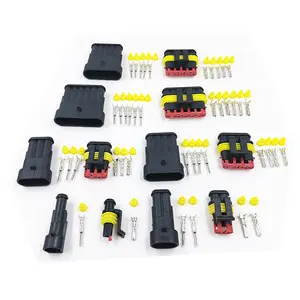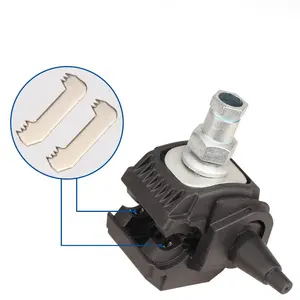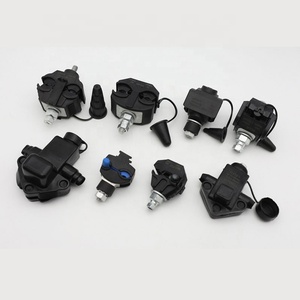Introduction
In an era where energy efficiency and sustainability are paramount, low voltage connectors are revolutionizing the way we approach our projects. These connectors, also known as input-output or I/O connectors, are terminal interfaces that link devices together in a network, significantly impacting how your network operates. They come in various types, each with unique specifications, and are integral to physically linking a system together. This article delves into the world of low voltage connectors, their types, their impact on project efficiency, and how to incorporate them into your projects. We will also explore some case studies where these connectors have revolutionized projects.
Understanding Low Voltage Connectors
Low voltage cable connectors, also known as input-output or I/O connectors, are terminal interfaces that link devices together in a network. They come in a male-to-female plug arrangement, with some being hermaphroditic, able to plug into either. These connectors are integral to physically linking a system together, impacting the network wiring they're incorporated into. They allow cables to interface with devices, transmitting data to and from them. The type of connector used can significantly impact how your network operates.
Types of Low Voltage Connectors
Low voltage connectors come in various types, each with unique specifications. For instance, some electrical power supply connectors operate at a voltage between 1,000 V and 15,000 V, with a primary current of 1,000, 530, 600, 250, 630 A. Some data connectors have a data rate of 10 Gb/s. Other data connectors have an impedance of 50, 75 Ohm, a primary current of 5 A, and a voltage of 1.6 kV. Some watertight connectors operate at a voltage between 1 kV and 2.4 kV, with a primary current of 1.5 A - 35 A.
The Impact of Low Voltage Connectors on Project Efficiency
Low voltage design, such as the use of low voltage connectors, significantly impacts project efficiency. This design approach minimizes voltage consumption, making homes energy efficient and environmentally friendly. The structured cabling of low voltage design creates an efficient building wire infrastructure that supports standard energy consumption requirements and scales for future electrical upgrades. This system is easy to use, efficient, flexible, and well-organized. It transmits data at lightning-fast speeds while consuming less electricity and requiring less maintenance.
Energy Efficiency and Sustainability
Industrial companies are increasingly seeking energy-efficient solutions to reduce power consumption and costs. One such solution is the use of low-impedance connectors, which can significantly reduce electricity usage. These connectors are not only cost-effective but also contribute to sustainability by reducing energy consumption. In data centers, for instance, the use of these connectors can result in up to 50% energy savings. The energy efficiency of these connectors also extends to other electricity-intensive manufacturing processes, making them a climate-friendly choice for various industries.
Safety and Reliability
Choosing connectors with appropriate voltage and current ratings is crucial for ensuring the safety and reliability of electrical systems. Using connectors that are not compatible with the required ratings can lead to serious consequences, including safety hazards, system failures, and costly repairs. In the context of low voltage connectors, these considerations are equally important. By understanding the significance of these ratings, you can make informed decisions and avoid potential risks, ensuring a smooth and reliable operation of your electrical systems.
Ease of Installation and Maintenance
Low voltage connectors, particularly those used for direct burial applications, are designed for ease of installation and maintenance. The process involves turning off the power, pulling apart cable wires, stripping the wire, twisting the ends of each wire, and inserting the wires into the connectors. It's crucial to twist them in the same direction to avoid creating loose connections. Once the connectors are installed and tested, the cables can be buried. This straightforward process ensures a secure, waterproof connection, critical for the reliability of outdoor lighting systems.
Incorporating Low Voltage Connectors into Your Projects
Incorporating low voltage connectors into your projects is crucial for the success of outdoor lighting systems. These connectors, often used for direct burial applications, are filled with silicone gel to seal the connection and protect against ground moisture. The cable connection points, which are often the point of failure, connect the fixtures to the low voltage transformer, providing power. Ensuring a secure connection the first time is critical. The process involves turning off the power, pulling apart cable wires, stripping the wire, twisting the ends, inserting the wires into the connectors, testing the connection, and finally burying the cables.
Choosing the Right Connector for Your Project
Choosing the right connector for your project is crucial. There are various types you can consider, such as hub connectors, wire nut connectors, and crimp and barrel styles. Hub connectors are ideal for connecting several fixtures to a single point. Wire nut connectors provide a reliable direct burial connection. Crimp and barrel styles, preferred by many professionals, house the wires in small thin tubes that are crimped and/or secured with set screws. Some of these also employ heat shrink tubing for waterproofing.
Installation Tips and Best Practices
Start by turning off the outdoor lighting transformer. Pull apart the cable lead wire about six inches. Use wire strippers to expose about ½ inch of the wire. Twist the exposed copper ends together, then fasten it with a lead fixture wire from the transformer. Insert the wire connections into the waterproof connectors and twist them clockwise. Test the connection by turning the power back on and checking if the fixture turns on. Once successful, bury the cables.
Case Studies: Revolutionizing Projects with Low Voltage Connectors
Some companies have pioneered high voltage connector systems designed for heavy-duty electric vehicles. These connectors are part of a complete cable protection system designed to meet or exceed industry standards, protect critical wiring, and improve performance and reliability in high voltage applications. These connector systems offset the need for expensive, bulky cable clamps in high voltage applications and expand the company's electrification solutions for a broad range of demanding and high-use areas of transportation. They have been widely used in industrial, robotics and transportation installations, and are available globally.
Conclusion
Low voltage connectors have proven to be a game-changer in the world of project management, providing energy efficiency, safety, reliability, and ease of installation and maintenance. They are a critical component in the design of energy-efficient homes and industrial processes, contributing to sustainability and cost savings. The choice of the right connector for your project is crucial, and understanding their specifications can help avoid potential risks and ensure smooth operation. Companies are already harnessing the power of these connectors, revolutionizing their projects. As we move towards a more sustainable future, the role of low voltage connectors will only become more significant.







































 浙公网安备 33010002000092号
浙公网安备 33010002000092号 浙B2-20120091-4
浙B2-20120091-4